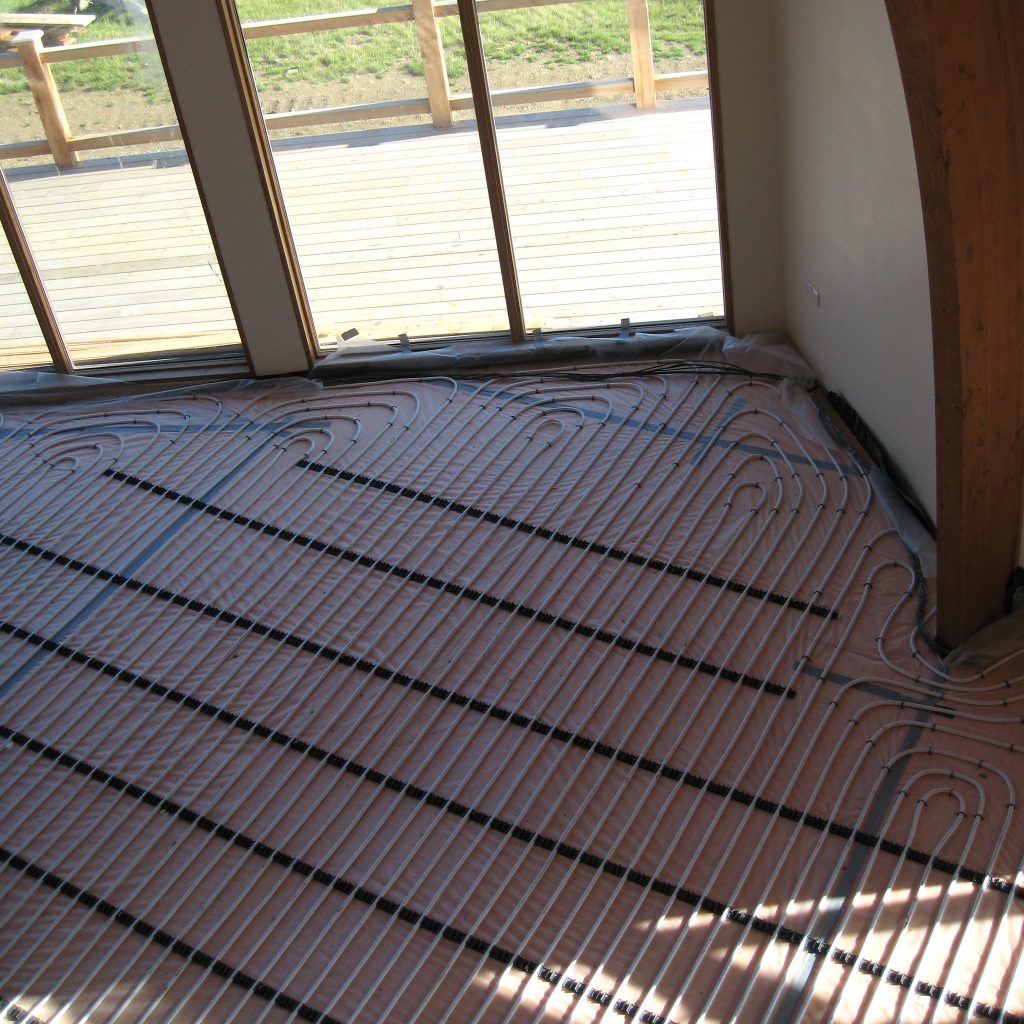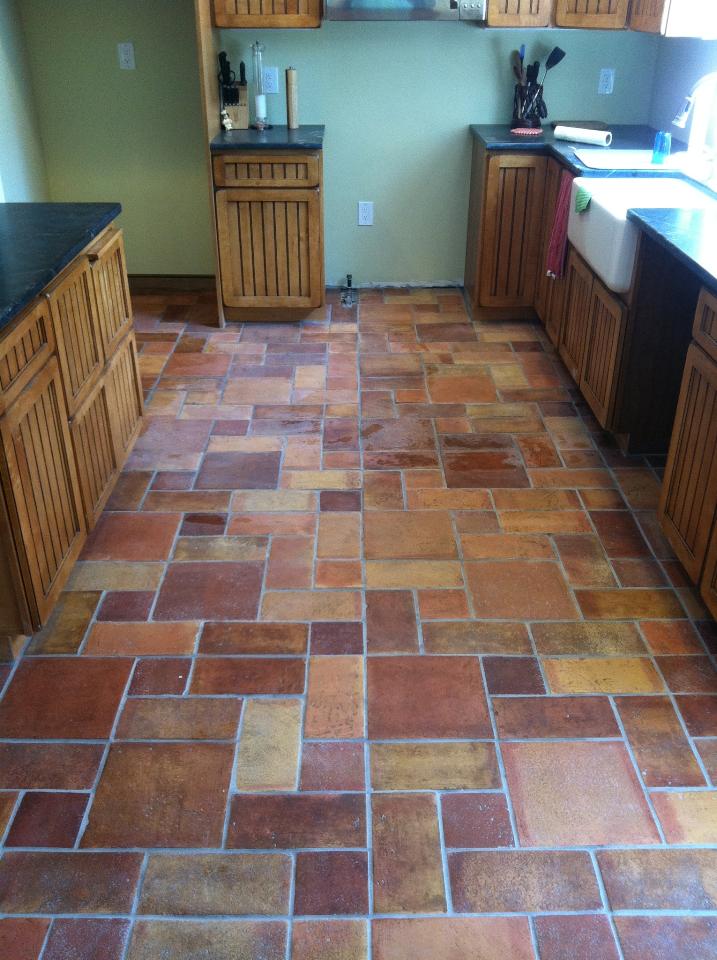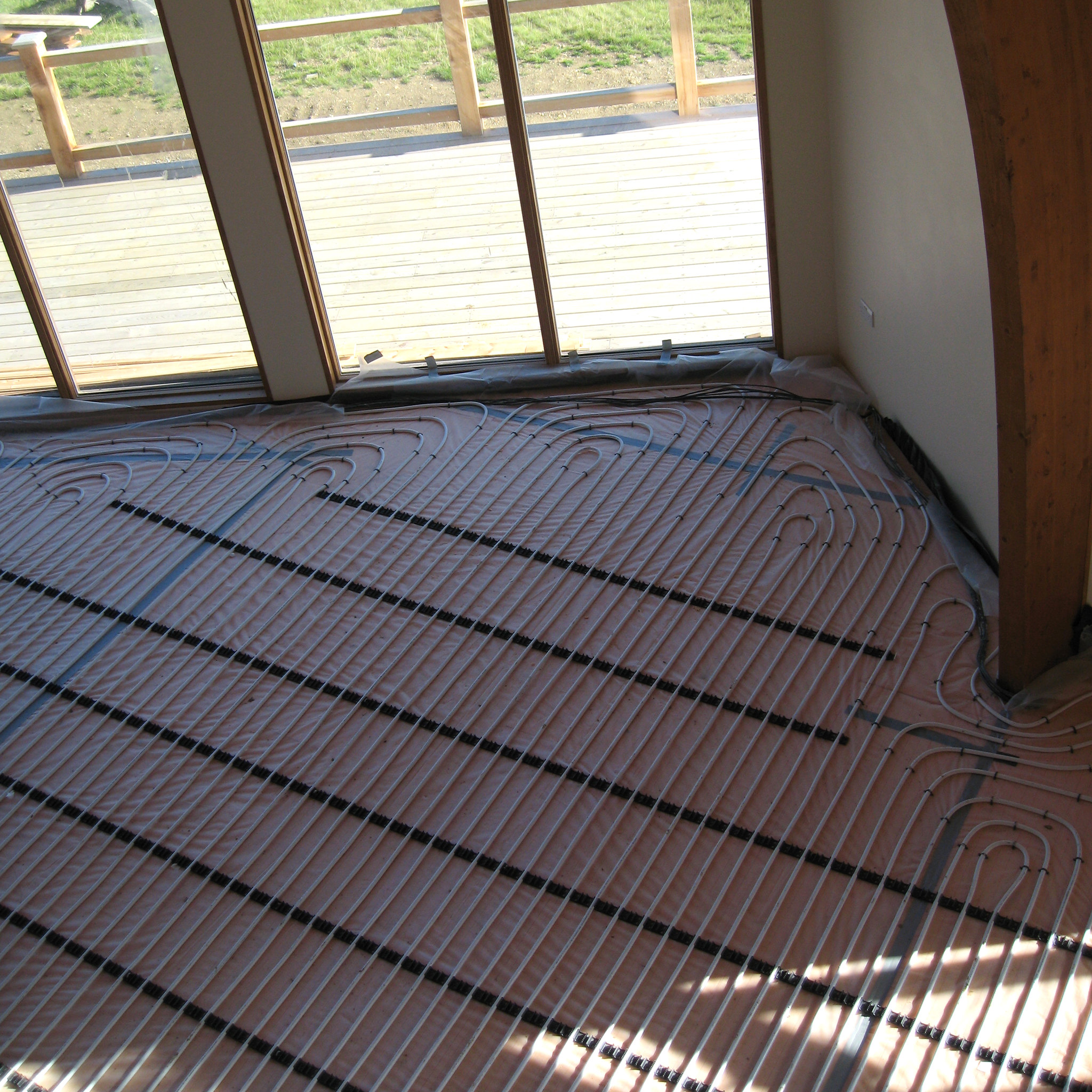The heating of your garden room is an important decision to make; obviously it is a decision that would be best made before construction has even begun, as this would allow you to research all the advantages and disadvantages of the different types of heating systems available before making a commitment.
This article will examine the pros and cons of garden room under floor heating; we will look at the different systems available, what is involved with their installation and how this may affect you and your family.
Under floor heating provides radiant heat from the floor up for consistent warmth at a comfortable temperature, it is particularly efficient under hard floors but it can also be used under carpet that is not too thick, this includes any underlay, a tog rating below 2.5 is generally recommended. Under floor heating can save you money on your heating costs as it operates more efficiently than traditional radiators and does not need to run at such a high temperature, because of this it takes much longer to warm up than radiators, at least 2 to 3 hours to become noticeable, depending upon the type of system and your flooring. Many home owners keep their under floor heating switched on all day during the winter months. Under floor heating is popular because it leaves walls free of radiators, meaning young children are not at risk of touching hot surfaces and giving you more options for design and furniture placement.
Water based under floor heating is known as a wet system and it works in the same way as your central heating radiators, only instead of heat radiating from a radiator hanging on a wall it is provided by a network of pipes installed under your floor. As with a radiator this network of pipes is connected to your central heating boiler which heats the water contained within the system.
Electric under floor heating is known as a dry system, this consists of a network of thin wires that are either laid loose or as part of roll out matting, this network of wires is connected to your mains electricity supply and they heat up when switched on.
Your choice of whether to opt for an electric or a water based under floor heating system will probably be decided by the distance that your garden room is positioned from your main house, as generally the further away it is, the more expensive and disruptive it will be to install. The easiest and most cost effective way to install garden room under floor heating is during the build, it is simply more efficient to factor in the under floor heating at this time, it is entirely possible to retrofit garden room under floor heating but this will entail lifting the floor covering, you may also find that it will affect the floor height. Water based under floor heating systems usually take longer to install and are generally more expensive to install than electric systems, however, water based systems are much cheaper to run, for this reason electric under floor heating is often used for single rooms and smaller or difficult to work areas. A garden room under floor heating system can be installed by a competent DIYer and there are a variety of kits available for this purpose, although you will still need the expertise of a fully qualified professional to connect to your mains electricity supply.

Both wet and dry under flooring heating systems will be installed on top of the concrete base of your garden room, this will often have insulation in the form of a waterproof membrane and this membrane will have a layer of thermal insulation over it. The wet system pipes or the dry system wires are then laid and a layer of screed is applied – it is imperative that both wet and dry under floor heating systems are installed within the screed layer and not concrete as this can cause damage. Once the screed has cured and the system has been slowly warmed up and allowed to cool again, your floor covering can be fitted.
The best types of flooring to use with under floor heating are those that are natural heat conductors, stone, slate and ceramic tiles are all good examples, whilst vinyl and laminate flooring will also work well. Engineered wood is probably a better choice than real wood because the heat can cause warping or shrinkage, proceed with caution if you cannot bear the idea of anything but genuine wood on your floors. As previously mentioned, it is possible to use carpet provided it is not too thick.

Garden room under floor heating has many benefits; including that it provides consistent and comfortable heat throughout the building, it works at a lower temperature than traditional radiators so it could reduce your heating costs, it is safer for young children as there are no hot radiator surfaces to touch, no radiators means clear wall areas so more options for furniture placement and finally, lovely warm feet!
There are some disadvantages of garden room under floor heating; this includes the cost of installation, the time it takes to warm up, retrofitting can be messy and disruptive and there are potential issues with floor heights.
Planning permission is not generally required for an under floor heating system, although you will probably need building regulations approval. As always, we recommend that you contact your local planning authority for advice before starting work as some areas of the UK may have different rules, regulations and restrictions than others. If you live in a listed property you will need to apply for the appropriate permissions before commencing.
Under floor heating is a great choice for heating a garden room, particularly if you are able to install the system as part of its construction. Garden room owners generally opt for the electric, or dry, system and run it as a low to medium background heat with perhaps one or two wall hung electric heaters as a backup for the coldest winter days. Whatever system you choose we are sure you will enjoy the comfortable warmth – and having cosy toes!
